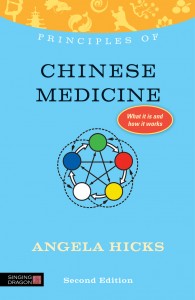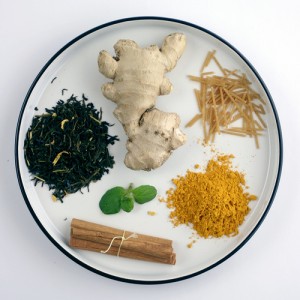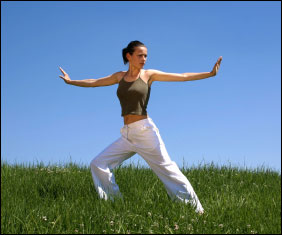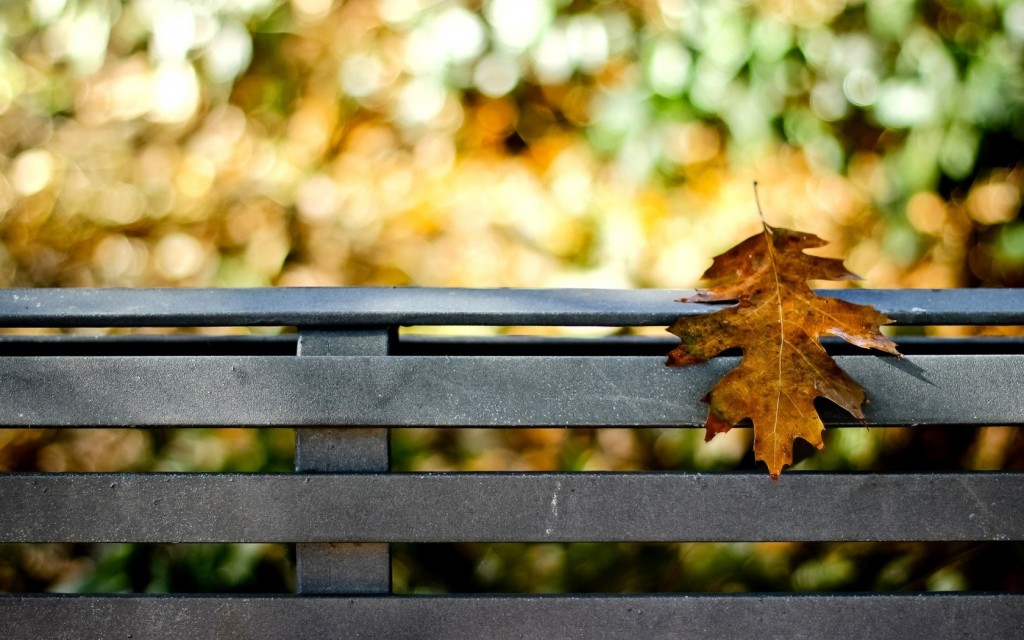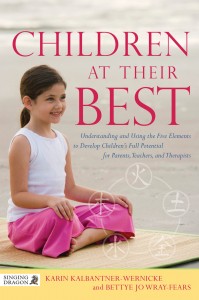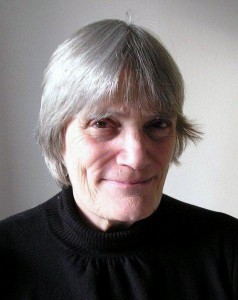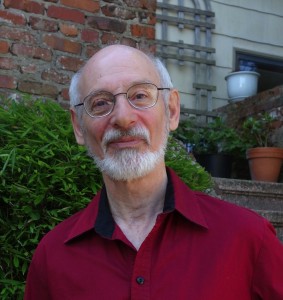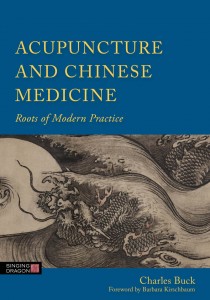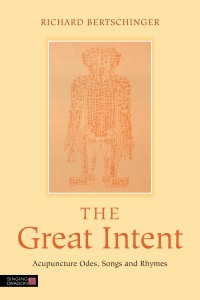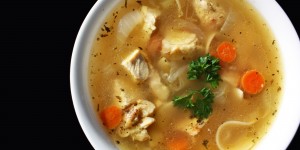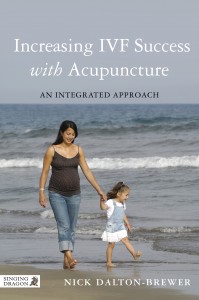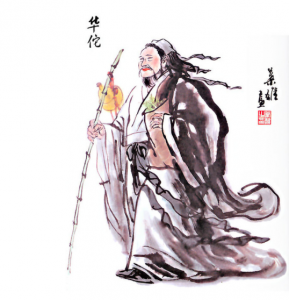 When you look through paintings of ancient acupuncturists, you can’t help noticing that most of them hold long walking sticks or calligraphy brushes, swords, or bottle gourds. Of course, these “objects” were included in the paintings for a special reason. The pole, the sword and the calligraphy brush share many common core theories, but ultimately these instruments are intended to become extensions of the hands, and connect with the inside, or as the Chinese say: 内外合一 (the internal and the external become as one). Only then, the energies can flow unobstructed and the Intention (意) can reach the tip of the instrument, like is demanded in the calligraphy or martial theory. The bottle gourds often represent the “dantian”. The ancient acupuncturists would often hang bottle gourds at the door of their clinics, as a sign that they are medical specialists and have entered the gate of the Tao.
When you look through paintings of ancient acupuncturists, you can’t help noticing that most of them hold long walking sticks or calligraphy brushes, swords, or bottle gourds. Of course, these “objects” were included in the paintings for a special reason. The pole, the sword and the calligraphy brush share many common core theories, but ultimately these instruments are intended to become extensions of the hands, and connect with the inside, or as the Chinese say: 内外合一 (the internal and the external become as one). Only then, the energies can flow unobstructed and the Intention (意) can reach the tip of the instrument, like is demanded in the calligraphy or martial theory. The bottle gourds often represent the “dantian”. The ancient acupuncturists would often hang bottle gourds at the door of their clinics, as a sign that they are medical specialists and have entered the gate of the Tao.
Most specifically for the pole, in basic Yiquan training, one first should pay attention in holding the body of the stick firmly, always looking at its tip, while seeking the forces in the six directions (up-down, left-right, back and front). At this stage these rules would ensure the establishment of a correct frame and the ability to exert whole body power towards one point, which is the tip of the pole (点) where the intention and spirit should always project towards.
Although the acupuncture needle is a much smaller instrument however, similar rules apply. For example, in the Neijing we learn that:
The Tao of grasping the needle requires holding it firmly, like it is a precious treasure. Insert [the needle] with the finger straight [perpendicular], and not angling towards either the left or right. The spirit is at the tip of the needle. Focus on the patient. Be careful to avoid blood vessels, and then needling will bring no harm. (Ling Shu—Jiu Zhen Shi Er Yuan)
Traditionally, acupuncture training was inseparably connected to the training of spirit (shen 神) and intention (yi – 意). This was accomplished through rigorous Neigong training. It is not by accident that besides the Imperial Palaces and the cities, traditional medicine often flourished around Taoist and Buddhist centers, where people trained martial arts and required realistic tuina, traumatology and acupuncture skills. Taoist and Buddhist Doctors were able to make martial and medical connections early on and strongly enhance the efficacy of their treatment, eventually reaching high levels of mastery. The ability to develop good body frame (in agreement with the internal and external harmonies), concentrate the spirit, train the mind and intention, were also vital for acupuncture, and could strongly influence the outcome of the treatment:
A continuous failure to induce curative effect is due to the acupuncturist’s inability to concentrate his spirit essence. When one pays no attention to the mind and intention, his internal and external [harmonies] will be in disagreement, and this will give rise to doubt and may lead to danger. (Su Wen— Zheng Si Shi Lun)
The [correct] method for using the needle demands to [completely] understand the physical form and qi, and their position. Left and right, upper and lower, yin and yang, exterior and interior, and whether [the amount] of qi and blood is sufficient or scanty, [or] if the movement [of qi] obeys or counters [the normal flow]. [If one completely] understands whether the [qi movement] obeys or counters [the normal flow] then they can establish how to best offer treatment. Examine the roots and branches, check about cold and heat (i.e. chills and fever), derive the location of the evil, and acupuncture needling will not cause any harm. (Ling Shu—Guang Neng)
Acupuncturists who have practiced Yiquan, can often use their understanding of the art to direct the intention-yi (意) towards the tip of the needle, and strongly influence the movement of qi.
Zhan Zhuang is the most direct way to reach such a goal because it’s simple, flexible and literally to the point. Connecting the inner with the outer, consciously controlling your every movement and progressing in your training daily will enable you to reach beyond and above all written instruction. You learn in the void, and that’s where the best things come from. But after reaching that point, that’s when you become your own teacher, or a “universal teacher” as is described in the martial classics, and then everything is possible.
The true qi follows tranquility and nihility (i.e. the void). If the essence and the spirit are guarded internally, how can illness develop? (Su Wen—Shang Gu Tian Zhen Lun)
Because of the way standard TCM is practiced these days, this training is something that many seem to neglect. I hope that through my latest book, western acupuncturists have a rare chance to develop this understanding, and refine their practice towards eventually reaching higher levels of mastery.
Ioannis Solos studied Traditional Chinese Medicine at Middlesex University and the Beijing University of Chinese Medicine. He enjoys researching, teaching, practicing and critically interpreting the ancient philosophy and culture of China, internal martial arts, health preservation practices, classic medical texts and lesser-known Chinese esoteric traditions. He is the author of Developing Internal Energy for Effective Acupuncture Practice and Gold Mirrors and Tongue Reflections, both published by Singing Dragon.
